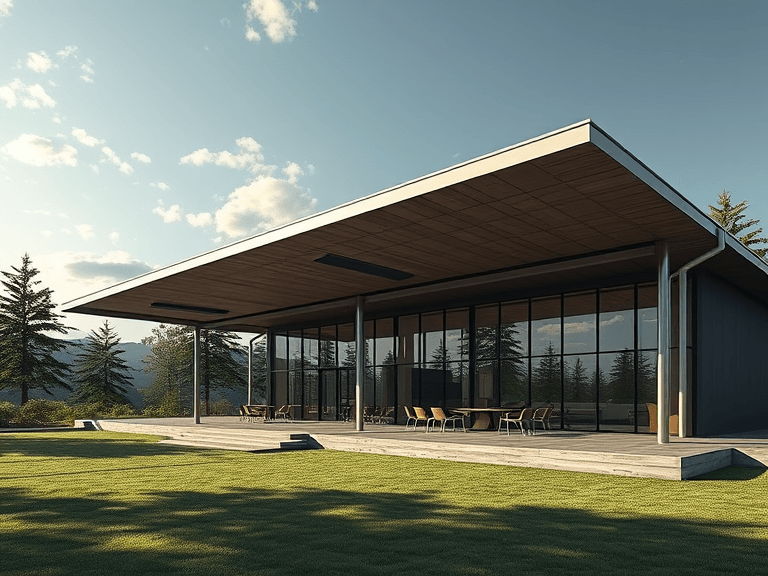
Metal roofs are known for their durability and longevity; however, they are not impervious to damage. One of the most significant issues homeowners may encounter is the formation of holes. Understanding the common causes of holes in metal roofs is essential for effective maintenance and timely repairs. Various factors can contribute to this type of damage, including weather-related issues such as heavy snowfall, strong winds, or extreme temperatures, which can cause the metal to expand and contract, eventually leading to cracks or holes.
Physical damage often results from debris such as falling branches or hailstorms. This impact can puncture the metal surface, creating holes that may worsen over time if not addressed. Additionally, improper installation or subpar materials can result in vulnerabilities that are detrimental to the long-term integrity of a roof. Corrosion represents another common cause, particularly in areas where the roof is frequently exposed to moisture. The accumulation of water can accelerate rust formation, leading to holes and compromised structural soundness.
Early detection of these issues is crucial as it can significantly reduce the extent of repairs needed over time. Homeowners should regularly inspect their metal roofs for signs of damage, which can manifest as discoloration, rust spots, or visible holes. By assessing the condition of the roof and determining the extent of any damage, appropriate repair methods can be identified. Implementing preventive maintenance such as routine cleaning, surface treatments, and timely repairs can mitigate the risk of severe roofing problems. A proactive approach will also ensure the longevity of the metal roof, ultimately preserving the safety and aesthetics of the home.
Tools and Materials Needed for Repair
Repairing a hole in a metal roof requires a specific set of tools and roofing materials to ensure a successful and durable fix. Below is a comprehensive list to guide you through the process.
Firstly, essential tools include hand tools such as a tape measure, utility knife, and metal snips. A tape measure is vital for accurately measuring the size of the hole and cutting the sheet metal patch to the appropriate dimensions. A utility knife can be used to trim the edges of the metal for a clean fit, while metal snips will facilitate cutting metal sheets easily.
Secondly, roofing screws are crucial during the repair process. These screws are designed specifically for metal roofing and provide a secure connection for your patch. It is important to select screws that match the thickness of your metal roof to ensure a tight seal and prevent leaks after the repair.
Next, a high-quality sealant is recommended to further waterproof the patched area. Look for products specifically formulated for metal roofing, as they tend to offer superior adhesion and flexibility, which is necessary to accommodate the roof’s natural expansion and contraction due to temperature changes.
Additionally, a sheet metal patch is required to cover the damaged area effectively. Choose a patch that is made of similar metal to that of the existing roof, as this will ensure compatibility and durability. Typically, patches should be at least 2 inches larger than the hole on all sides to provide a proper seal.
Lastly, don’t forget to equip yourself with safety gear. Wearing gloves, goggles, and a hard hat is essential to protect yourself from sharp edges and falling debris during the repair process.
By gathering the necessary tools and materials beforehand, you can ensure an efficient repair of the hole in your metal roof.

Step-by-Step Repair Process
Repairing a hole in a metal roof is a task that requires careful preparation and execution to ensure lasting results. Begin by gathering the necessary materials, including a metal patch, roofing screws, a sealant suitable for metal, and basic tools such as a drill, screwdriver, and safety goggles. Safety measures are paramount; always wear protective gear and ensure the work area is stable and secure.
Once prepared, the next step is to clean the area surrounding the hole thoroughly. Remove any debris, rust, or paint that could hinder the adhesion of the patch. This cleaning is crucial to achieving a proper seal and preventing future leaks. Once you’ve done this, measure the dimensions of the hole and cut your metal patch slightly larger than the damaged area to ensure adequate coverage.
Now, it is time to fit the patch into place. Align the metal patch over the hole, ensuring that it extends beyond the edges of the damage. Secure the patch with roofing screws at regular intervals around the perimeter, making certain they are driven in snugly. Be cautious not to overtighten, as this can lead to further damage.
The sealing process is vital in preventing potential leaks. Apply a generous bead of sealant around the edges of the patch. Use a putty knife to spread the sealant evenly, ensuring that it fills any gaps and creates a water-tight seal. Allow the sealant to cure according to the manufacturer’s instructions.
After completing the repair, it is essential to monitor the patched area regularly, especially during heavy rain or snow, to ensure that no leaks develop. Additionally, consider applying a coat of paint or protective sealant to the entire roof to enhance durability and prevent rust. Be mindful of common pitfalls such as insufficient cleaning or not allowing adequate curing time for the sealant, which can compromise the effectiveness of your repair.
When to Call a Professional
While many homeowners may feel inclined to undertake the task of repairing a hole in a metal roof on their own, there are several situations where it is advisable to seek the assistance of a professional. Firstly, if the damage appears to be extensive or presents signs of underlying structural issues, consulting an expert can provide a comprehensive solution to ensure the longevity of the roof. Professionals possess the experience and knowledge to accurately assess the intricate dynamics of metal roofing systems, enabling them to identify problems that an untrained eye might overlook.
Secondly, safety is a paramount concern when dealing with roofs, particularly those that are significantly elevated. Homeowners should carefully evaluate their own comfort and skill level when it comes to climbing ladders or working at heights. If the roof repair involves navigating steep slopes or has potential hazards, such as unstable structural supports, hiring a professional is the safest choice. They are equipped with the necessary safety gear and training to perform the repair without risking personal injury.
Weather conditions also play a vital role in determining whether to pursue a DIY repair or hire a professional. If rain or high winds are imminent, attempting to repair a hole in a metal roof can become dangerously complicated. Professionals are often accustomed to working in less-than-ideal conditions and can better plan repairs around weather considerations, ensuring that the job is completed effectively and safely.
In conclusion, when contemplating whether to repair a hole in a metal roof independently or to call a professional, it is essential to weigh your skills against the complexity of the task. An expert can provide peace of mind, ensuring that the repair is done correctly and safely, while also addressing any unforeseen issues that may arise. Taking these factors into account will help ensure a more effective and lasting solution to your roofing concerns.


